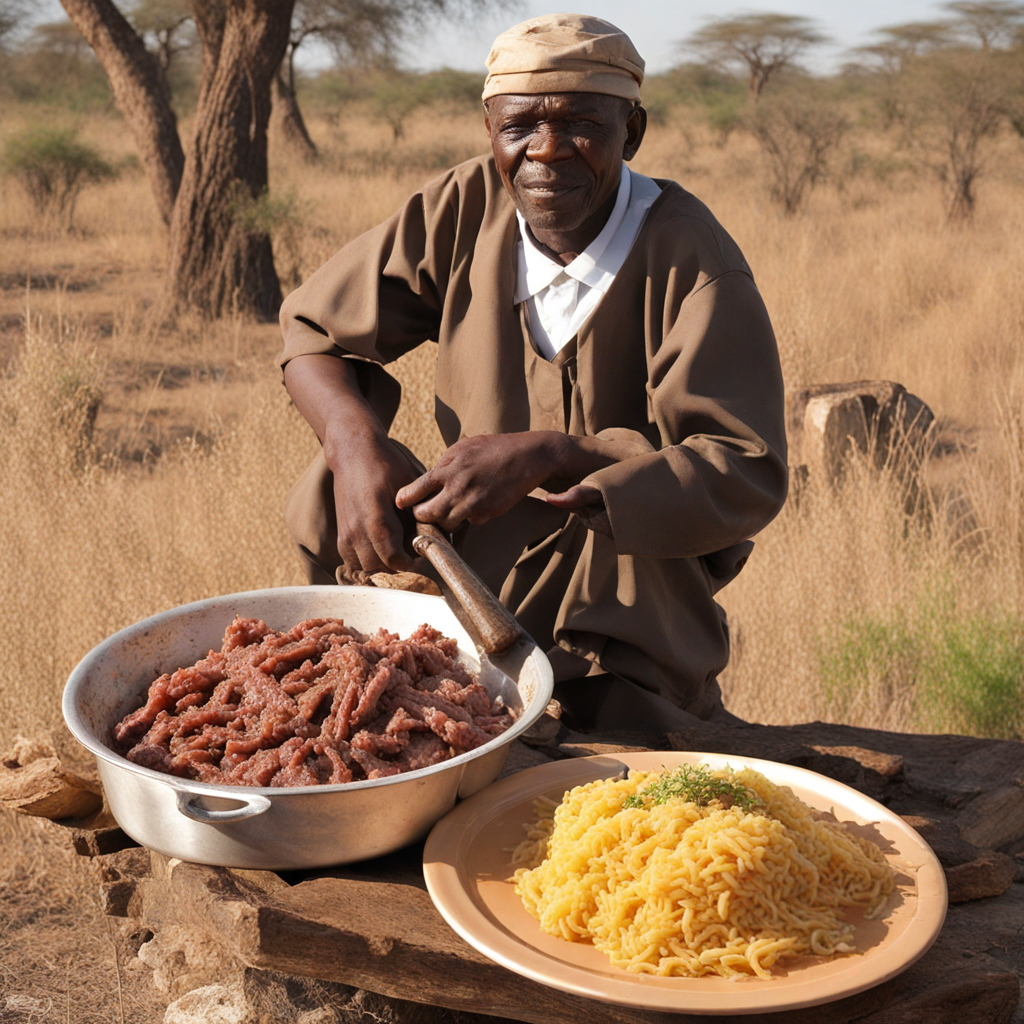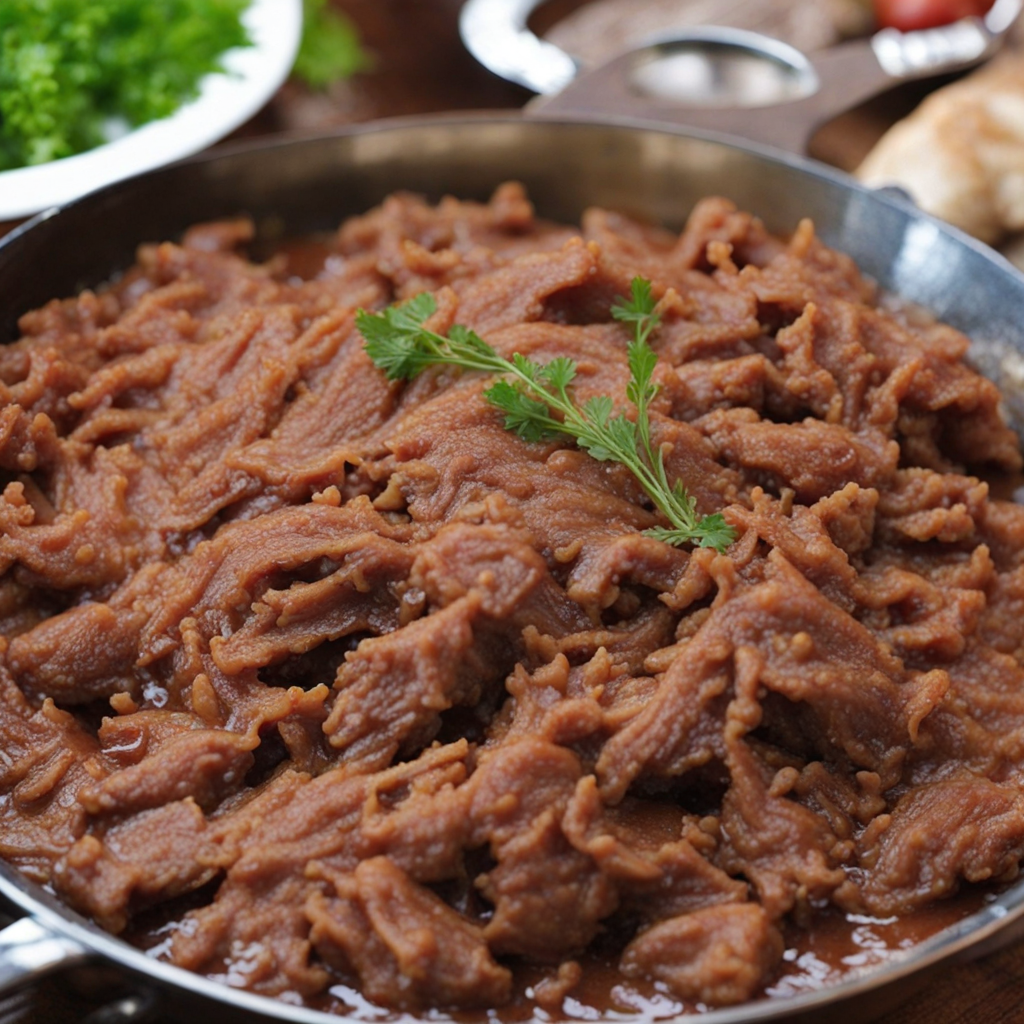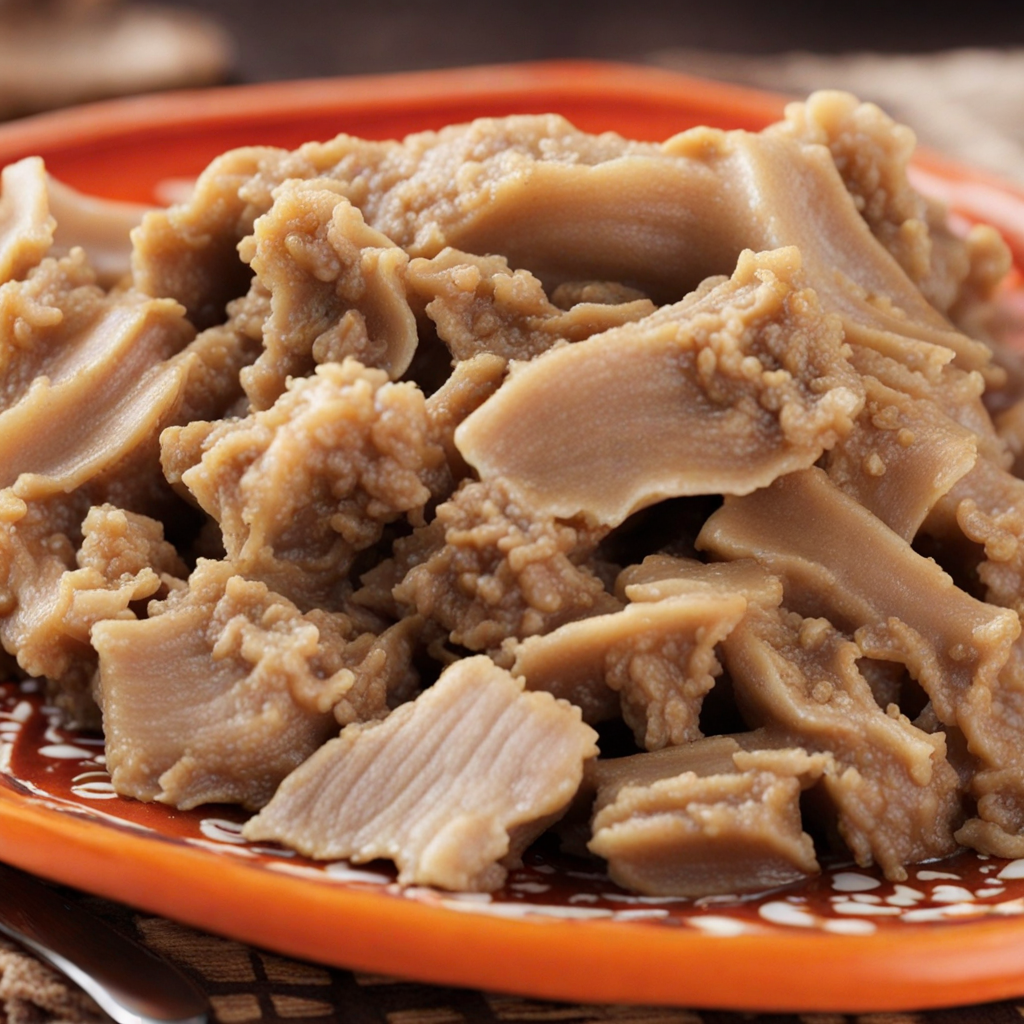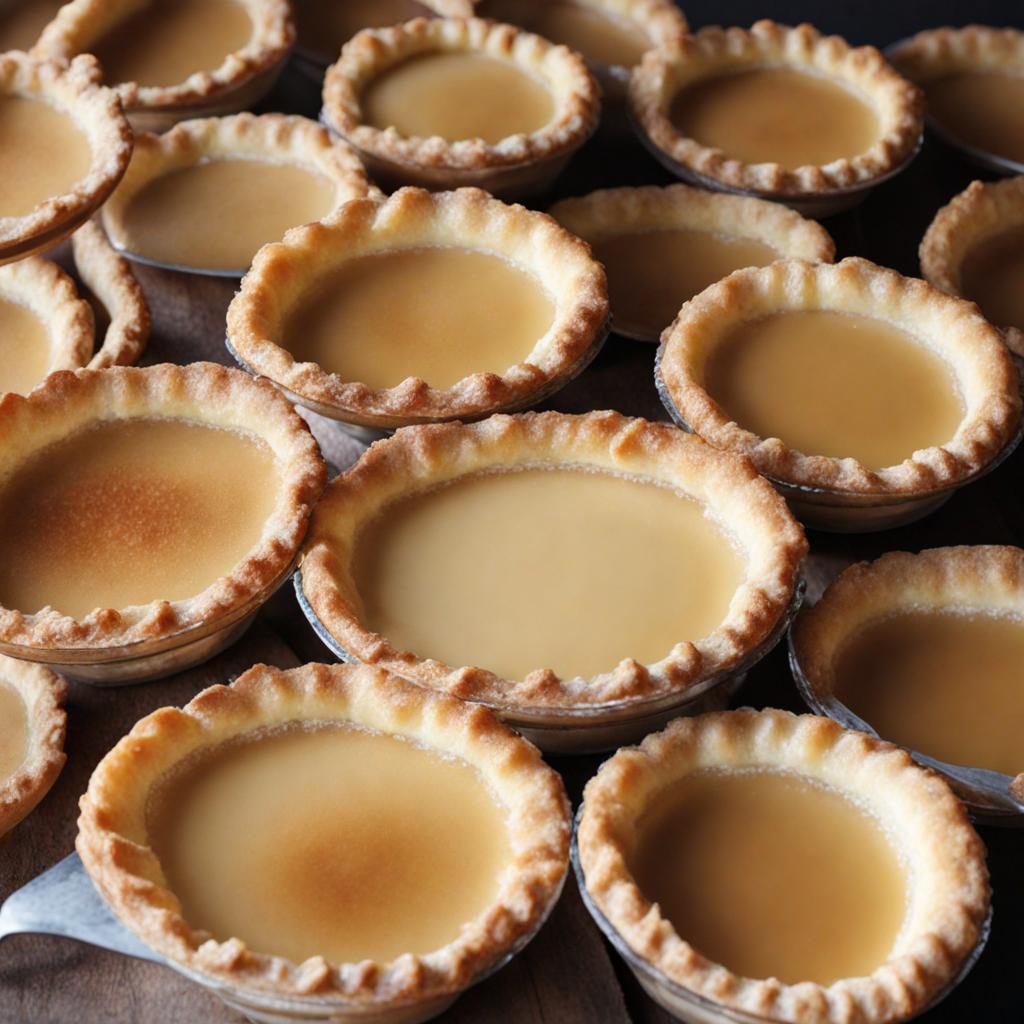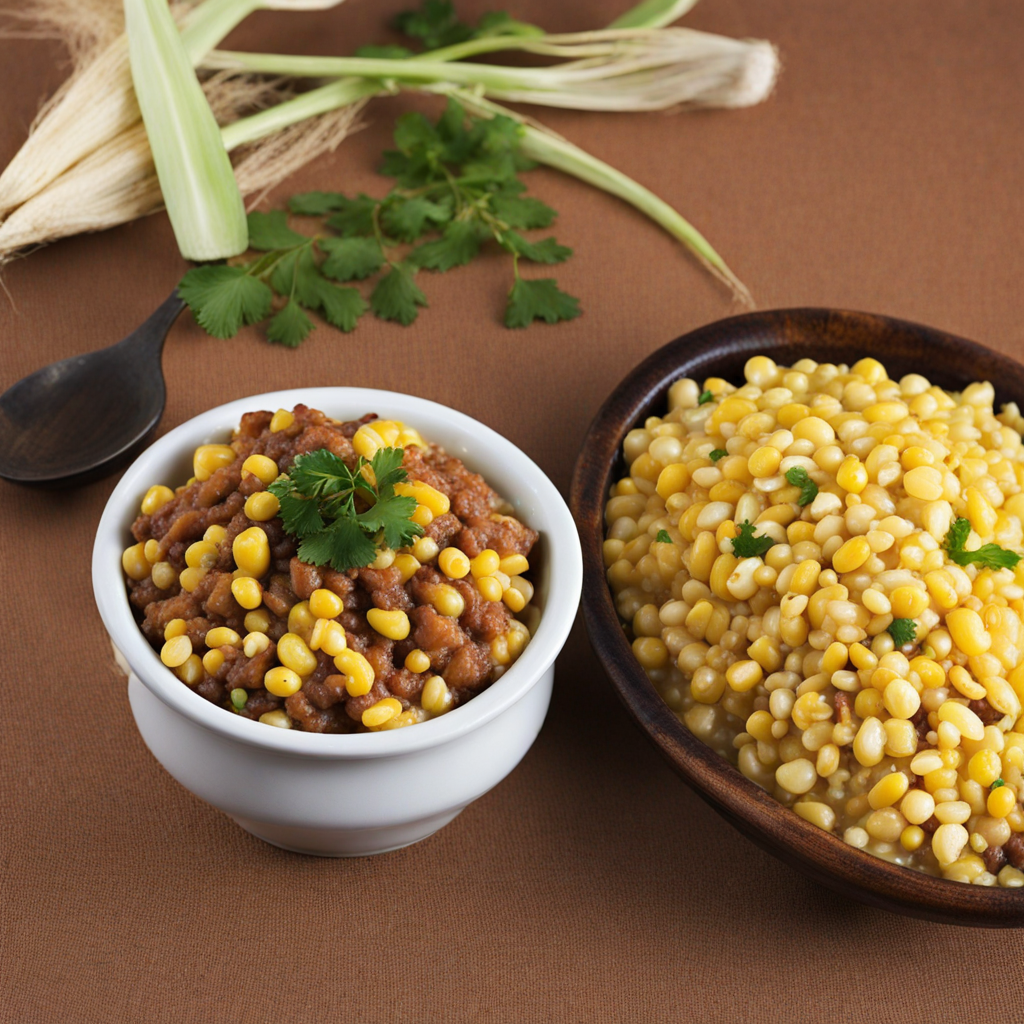Seswaa
Seswaa is a traditional dish hailing from Botswana, known for its rich flavors and hearty texture. It is primarily made from slow-cooked, shredded beef, which is seasoned simply with salt and sometimes accompanied by a touch of pepper. The cooking process is crucial; the meat is simmered for hours until it becomes incredibly tender, allowing it to easily fall apart. This method not only enhances the natural taste of the beef but also allows the flavors to meld beautifully, resulting in a comforting and satisfying dish that is perfect for any occasion. Typically served with a side of pap (a maize-based porridge) or bogobe (a traditional porridge made from sorghum), Seswaa embodies the essence of Botswana's culinary culture. The mild flavor of the pap complements the savory meat, creating a delightful balance that is both filling and nourishing. It’s common to find Seswaa served during special gatherings, weddings, or communal feasts, showcasing its significance in the local cuisine as a dish meant for sharing and celebrating. The experience of enjoying Seswaa goes beyond just the taste; it is a connection to the traditions and communal spirit of Botswana. The simplicity of the ingredients allows the quality of the beef to shine through, making it a dish that speaks to the heart of home-cooked meals. Whether you are enjoying it in a local eatery or trying your hand at making it at home, Seswaa offers a unique taste that invites you to explore the rich culinary heritage of Botswana.
How It Became This Dish
The History of Seswaa: A Culinary Treasure of Botswana #### Origins and Cultural Significance Seswaa, a traditional dish from Botswana, is a testament to the rich culinary heritage of the Tswana people and the broader cultural tapestry of Southern Africa. At its core, Seswaa is a slow-cooked meat dish, typically made from beef, goat, or lamb, seasoned with simple ingredients like salt and pepper, and often accompanied by a starch such as pap (maize porridge) or bogobe (sorghum porridge). The origins of Seswaa can be traced back to the early Tswana communities, who relied on livestock as a crucial part of their subsistence. Cattle, in particular, held immense cultural significance, symbolizing wealth and social status. The preparation of Seswaa often coincided with important communal events, such as weddings, funerals, and celebrations, where the act of cooking and sharing this dish fostered community bonds and reflected the values of hospitality and generosity intrinsic to Tswana culture. Historically, the preparation of Seswaa was an elaborate affair. Cooking methods varied widely, with communal cooking being a common practice. Traditionally, the meat would be boiled in a large pot, often over an open fire, a method that allowed for the rich flavors to develop slowly. In many communities, the cooking of Seswaa was a collective effort, with women taking the lead while men participated in the butchering and preparation of the meat. This communal aspect not only reinforced social ties but also served as an opportunity to teach younger generations the importance of culinary traditions. #### The Role of Seswaa in Tswana Rituals Seswaa holds a prominent place in the rituals and customs of the Tswana people. It is often served at significant life events, such as weddings, where it symbolizes abundance and the coming together of families. During funerals, Seswaa is prepared to honor the deceased and provide sustenance to mourners, reflecting the deep respect for ancestors and the importance of community support during times of grief. In addition to its role in major life events, Seswaa also embodies the notion of hospitality. Offering this dish to guests is seen as a demonstration of respect and honor, encapsulating the saying "a guest is a gift from God." This cultural significance is not merely tied to the act of eating but extends to the rituals surrounding the preparation and sharing of the dish, reinforcing the values of kinship and community. #### Ingredients and Cooking Techniques While the ingredients of Seswaa may seem simple, the cooking technique is what truly brings the dish to life. Traditionally, cuts of meat, often tougher and more flavorful, are selected to withstand the prolonged cooking time. These cuts are boiled until they are tender and easily shredded. The meat is then pounded or shredded, mixed with a bit of its cooking liquid, and served alongside the starch of choice. The simplicity of the dish speaks volumes about the Tswana philosophy of cooking, which emphasizes the natural flavors of the ingredients rather than masking them with complex spices. This approach is not only practical, given the limited access to a wide variety of spices in rural areas, but it also reflects a deep understanding of the local ecosystem and the importance of sustainable cooking practices. #### Modern Adaptations and Global Influence As Botswana has evolved over the decades, so too has the preparation and presentation of Seswaa. Contemporary chefs and home cooks are experimenting with the dish, incorporating modern techniques and flavors while still honoring its traditional roots. For instance, some may choose to use a pressure cooker to reduce cooking time while maintaining the dish's characteristic tenderness. Others may add ingredients like garlic or onions to enhance the flavors, though purists might argue this strays too far from tradition. Moreover, with the increasing globalization of food culture, Seswaa has begun to gain recognition beyond Botswana’s borders. Food festivals and cultural events showcasing African cuisine have introduced Seswaa to a broader audience, allowing people from different backgrounds to appreciate its unique flavor and cultural significance. This exposure has led to a fusion of culinary techniques and flavors, with chefs around the world drawing inspiration from Seswaa and incorporating it into their own menus. #### The Future of Seswaa As Botswana continues to navigate the complexities of modernity, the future of Seswaa remains bright yet challenging. The dish serves as a cultural anchor for the Tswana people, reminding them of their heritage and the communal values that have been passed down through generations. However, the rapid urbanization and changes in lifestyles may pose a threat to the traditional preparation methods and communal cooking practices associated with Seswaa. To ensure the preservation of this culinary treasure, there is a growing movement among chefs and cultural advocates to promote traditional cooking methods and engage younger generations in the culinary arts. Initiatives that focus on food education, including workshops and cooking classes, aim to instill a sense of pride in traditional dishes like Seswaa. By fostering a connection between young people and their culinary heritage, there is hope that the dish will continue to be a central part of Botswana's cultural identity. #### Conclusion Seswaa is more than just a dish; it is a reflection of the rich history, cultural values, and communal spirit of the Tswana people. From its humble beginnings as a sustenance food for livestock herders to its role as a symbol of hospitality and community, Seswaa encapsulates the essence of Botswana's culinary heritage. As it continues to evolve and adapt, the dish remains a vital link to the past and a beacon of cultural pride for future generations. In a world that increasingly values authenticity and heritage, Seswaa stands as a delicious reminder of the power of food to bring people together, celebrate tradition, and honor the spirit of community.
You may like
Discover local flavors from Botswana


